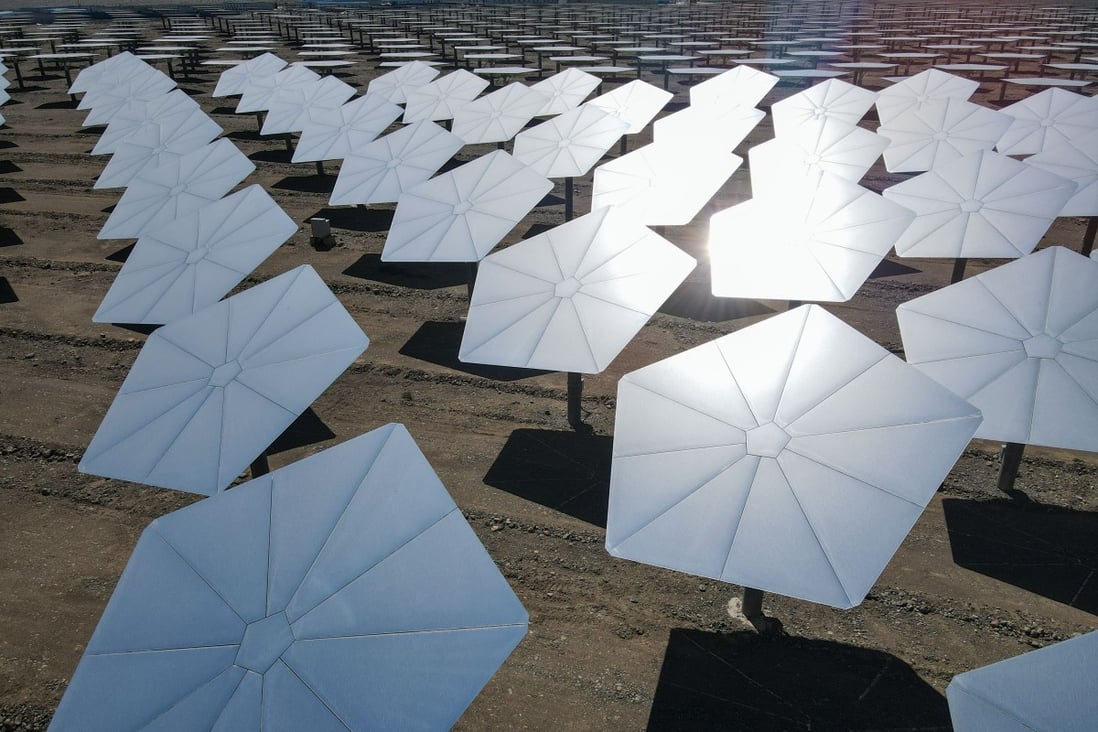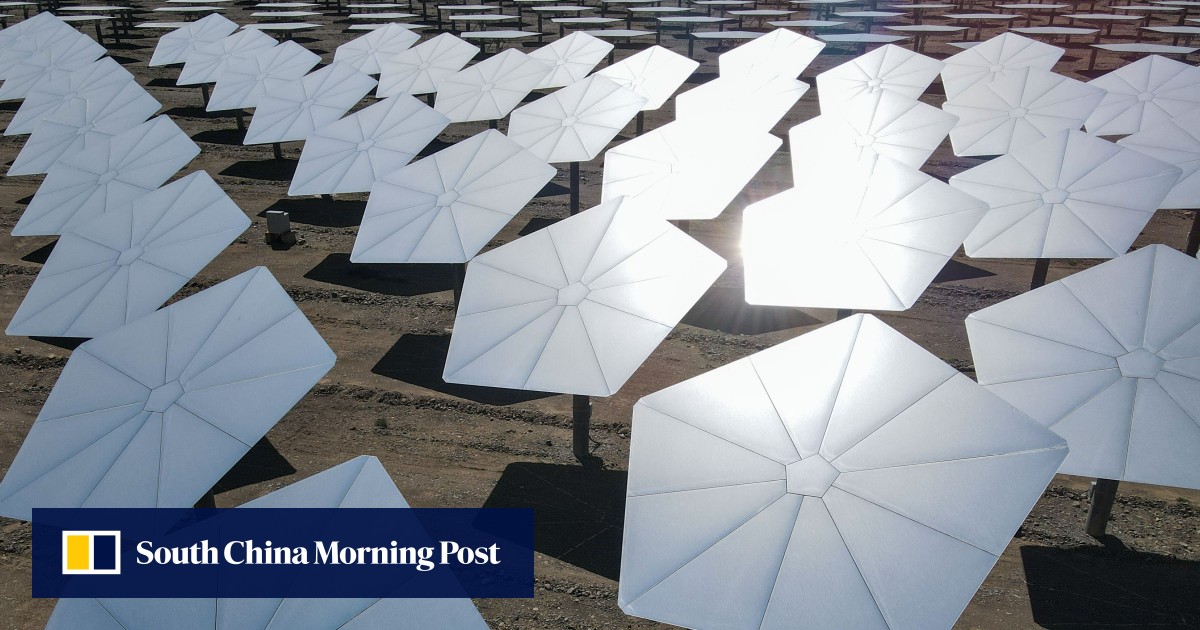Cost of solar to match coal power by 2023 and to meet more than 40 per cent of the China's electricity demands by 2060
Solar power, when paired with adequate storage capacity, could meet more than 40 per cent of the country’s electricity demands by 2060, say researchers
Decarbonising the energy system is a priority for China to deal with air pollution at home and global climate change, according to Chinese-US paper
Published: 12:00pm, 13 Oct, 2021

Researchers say solar photovoltaic power is expected to play an important role in next-gen zero-carbon power generation in China. Photo: Xinhua
The costs of solar and coal power will be comparable across China by 2023 as solar energy conversion becomes more efficient and the cost drops, according to a new study by researchers in China and the United States.
The researchers also found that solar power, when paired with the capacity to store energy for later use, could meet more than 40 per cent of the country’s electricity
demands by 2060, at less than 2.5 US cents per kilowatt-hour.
The study suggests “solar plus storage” could be competitive in cost and a grid-compatible source for a carbon neutral power system in China, which is the world’s largest carbon emitter.
China’s ability to decarbonise its energy system “strongly affects” its prospects of limiting global warming to the critical climate threshold of 1.5 degrees Celsius above pre-industrial levels, according to the team.
Solar was expected to be key to a future power system in a country in which coal had been the dominant energy source for more than 40 years, said the team of scientists from Tsinghua University, Nankai University, Renmin University of China and Harvard University in the US.
"The decline in costs for solar power and storage systems offers opportunity for solar-plus-storage systems to serve as a cost-competitive source for the future energy system in China,” the team wrote in an article published in the peer-reviewed journal Proceedings of the National Academy of Sciences of the United States of America on Monday.
“At present, subsidy-free solar power has become cheaper than coal power in most parts of China, and this cost-competitive advantage will soon be further enhanced and extended spatially due to technology advances and cost declines.”

 www.scmp.com
www.scmp.com
Solar power, when paired with adequate storage capacity, could meet more than 40 per cent of the country’s electricity demands by 2060, say researchers
Decarbonising the energy system is a priority for China to deal with air pollution at home and global climate change, according to Chinese-US paper
Published: 12:00pm, 13 Oct, 2021

Researchers say solar photovoltaic power is expected to play an important role in next-gen zero-carbon power generation in China. Photo: Xinhua
The costs of solar and coal power will be comparable across China by 2023 as solar energy conversion becomes more efficient and the cost drops, according to a new study by researchers in China and the United States.
The researchers also found that solar power, when paired with the capacity to store energy for later use, could meet more than 40 per cent of the country’s electricity
demands by 2060, at less than 2.5 US cents per kilowatt-hour.
The study suggests “solar plus storage” could be competitive in cost and a grid-compatible source for a carbon neutral power system in China, which is the world’s largest carbon emitter.
China’s ability to decarbonise its energy system “strongly affects” its prospects of limiting global warming to the critical climate threshold of 1.5 degrees Celsius above pre-industrial levels, according to the team.
Solar was expected to be key to a future power system in a country in which coal had been the dominant energy source for more than 40 years, said the team of scientists from Tsinghua University, Nankai University, Renmin University of China and Harvard University in the US.
"The decline in costs for solar power and storage systems offers opportunity for solar-plus-storage systems to serve as a cost-competitive source for the future energy system in China,” the team wrote in an article published in the peer-reviewed journal Proceedings of the National Academy of Sciences of the United States of America on Monday.
“At present, subsidy-free solar power has become cheaper than coal power in most parts of China, and this cost-competitive advantage will soon be further enhanced and extended spatially due to technology advances and cost declines.”

Solar power to be as cheap as coal across China within two years
Solar power, when paired with adequate storage capacity, could meet more than 40 per cent of the country’s electricity demands by 2060, say researchers.



